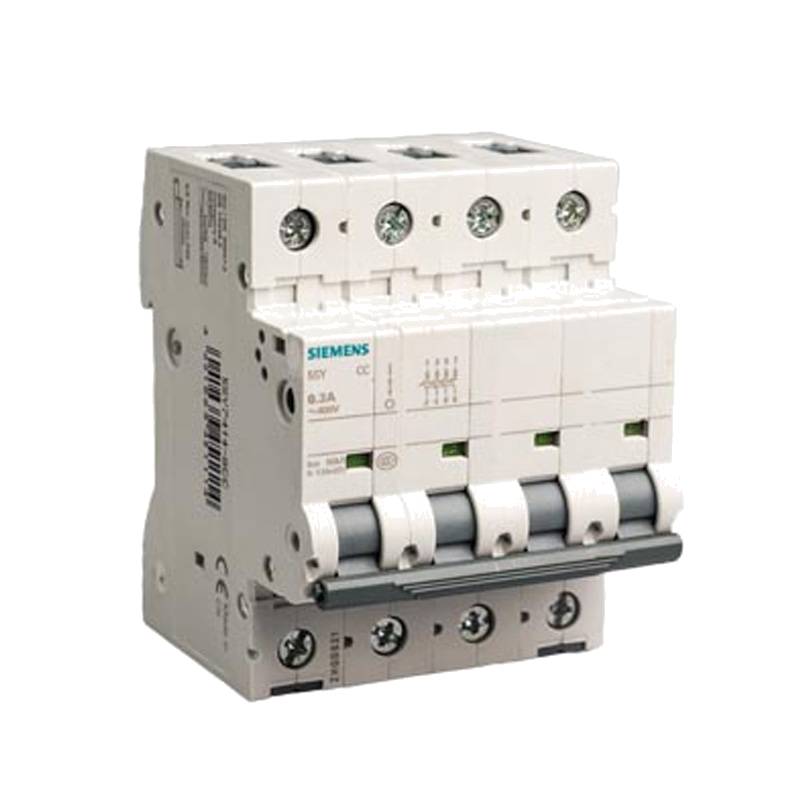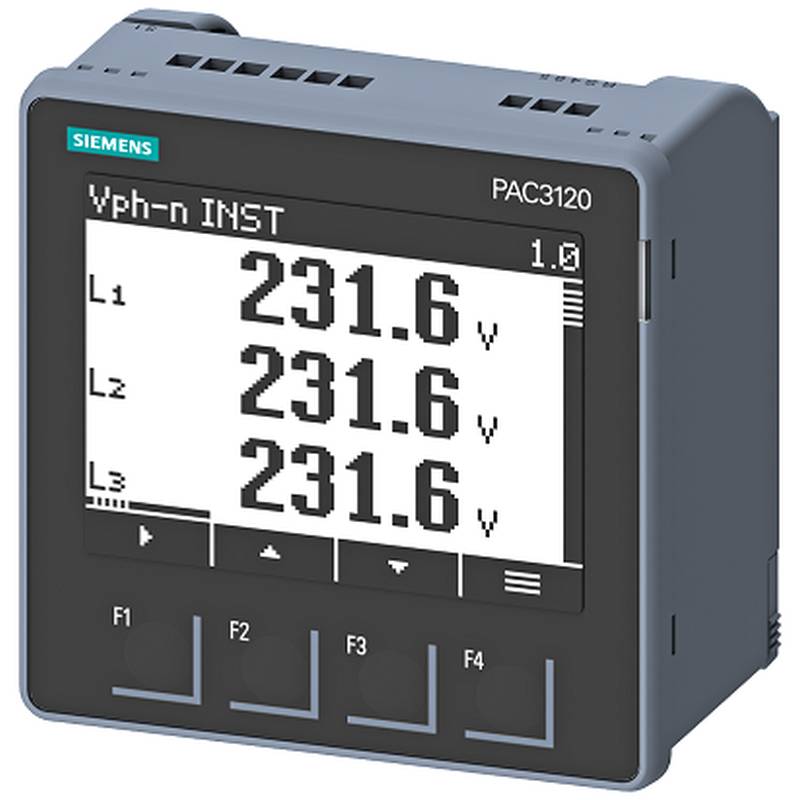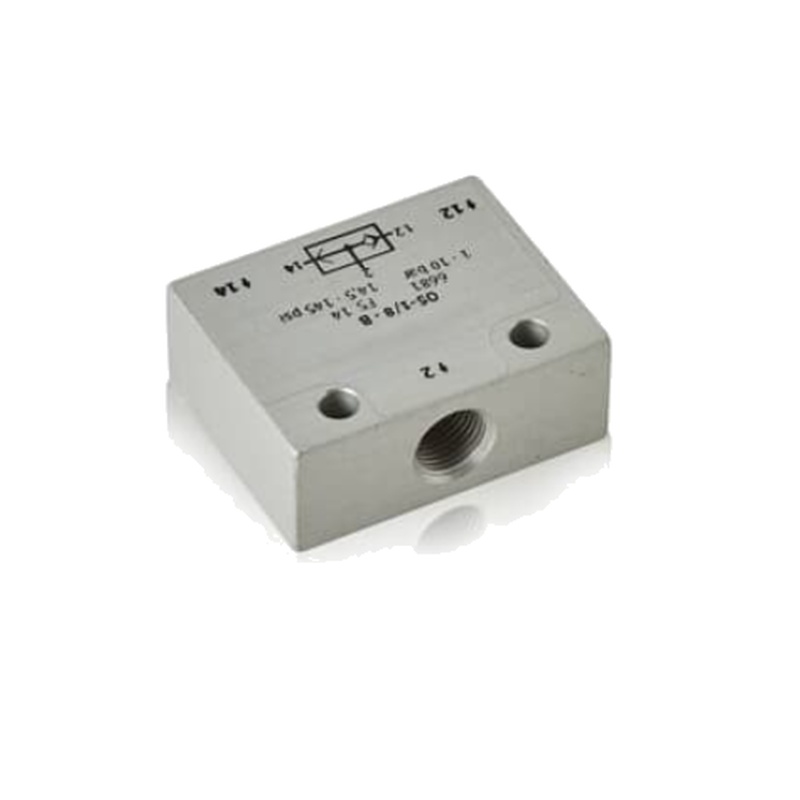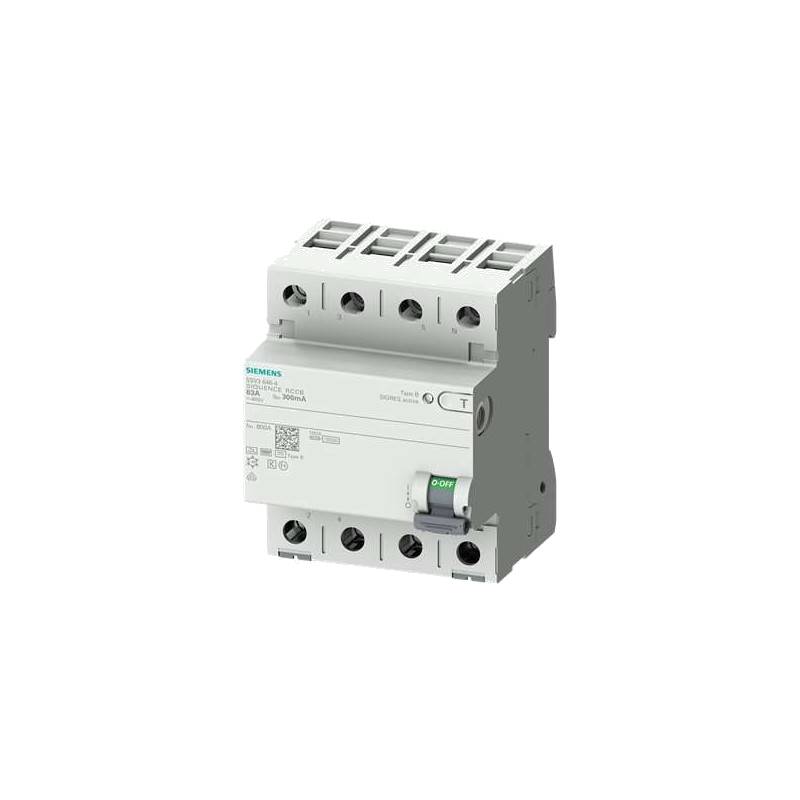
The Siemens 6ES7522-5FH00-0AB0 is an S7-1500 digital output module designed for robust industrial applications requiring reliable control of AC loads. This module features 16 Triac outputs, grouped in pairs, each capable of handling up to 1A, with a group current limit of 2A. It operates with a rated output voltage of 120/230V AC at 50/60Hz, making it versatile for various power supply environments. The module's design prioritizes safety and operational efficiency, offering features like channel-specific monitoring and configurable parameters through STEP 7 (TIA Portal). Its integration into the S7-1500 system ensures seamless connectivity and data exchange within a high-performance automation architecture.
Product Specifications
| Feature | Specification |
| :-------------------------- | :---------------------------------------------- |
| Product Number | 6ES7522-5FH00-0AB0 |
| Product Type | DQ 16x230VAC/1A ST (Triac) |
| System | SIMATIC S7-1500 |
| Digital Outputs | 16 (Triac) |
| Output Grouping | 8 groups of 2 |
| Current per Channel | Max. 1 A |
| Current per Group | Max. 2 A |
| Rated Output Voltage (AC) | 120/230 V AC, 50/60 Hz |
| Power Loss (Typ.) | 11.1 W |
| Switching Capacity (Resistive) | Max. 1 A |
| Switching Capacity (Lamp Load) | Max. 50 W |
| Output Delay ("0" to "1") | Max. 1 AC cycle |
| Output Delay ("1" to "0") | Max. 1 AC cycle |
| Residual Current (Max.) | 2 mA |
| Switching Frequency (Resistive) | Max. 10 Hz |
| Short-circuit protection | No built-in fuse; 6.3 A melting fuse (slow-blow) |
| Configurable/Integrated | STEP 7 (TIA Portal) from V13 SP1 / V5.5 SP3 |
| Integrated Operating Cycle Counter | Yes (FW V1.2.0 or higher) |
| I&M Data | Yes (I&M0 to I&M3) |
Core Features & Market Positioning
The Siemens 6ES7522-5FH00-0AB0 stands out in the industrial automation market due to its robust Triac output design, offering a reliable and efficient solution for switching AC loads. Its primary advantage lies in its seamless integration with the powerful SIMATIC S7-1500 platform, providing users with advanced diagnostics, flexible configuration, and high performance. The module's capability for channel-specific monitoring and its integrated switching cycle counter, a feature available with firmware version V1.2.0 and higher, enhance predictive maintenance and operational longevity of connected actuators. This focus on detailed monitoring and diagnostics positions the 6ES7522-5FH00-0AB0 as a superior choice for applications demanding high availability and precise control, differentiating it from simpler digital output modules.
Key Application Scenarios
The Siemens 6ES7522-5FH00-0AB0 excels in a variety of industrial settings where reliable switching of AC loads is paramount. Its 16 Triac outputs are well-suited for controlling actuators, contactors, solenoid valves, and lighting systems in manufacturing plants, process automation, and building management systems. Specific applications include controlling motor starters, managing conveyor belts, operating heating elements, and actuating pneumatic or hydraulic valves. The module's ability to handle 230V AC loads makes it ideal for powering standard industrial equipment. Its integration within the S7-1500 ecosystem allows for sophisticated control strategies, including diagnostics and status monitoring, crucial for industries like automotive manufacturing, pharmaceuticals, and material handling.
Practical System Integration Guidance
Integrating the Siemens 6ES7522-5FH00-0AB0 into an S7-1500 system is facilitated by Siemens' TIA Portal engineering software. The module can be configured using STEP 7 (TIA Portal) from version V13 SP1 onwards, or with a GSD file for older STEP 7 versions (V5.5 SP3 and later). Proper installation involves mounting the module onto a standard S7-1500 mounting rail and connecting it via a front connector, which must be ordered separately – options include screw terminals or push-in types. Wiring details, including front connector connections and cable shielding, are comprehensively outlined in the S7-1500/ET 200MP system manual. It's crucial to note that potential jumpers included with the front connector should not be inserted. The module's address space can be freely assigned, with channel addresses derived from the module's start address, supporting configurations for central, PROFINET IO, or PROFIBUS DP distributed operations.
Operation and Risk Mitigation
Safe operation of the Siemens 6ES7522-5FH00-0AB0 requires adherence to strict safety guidelines and qualified personnel. Siemens emphasizes that products should only be used for their described applications and in accordance with relevant documentation, including warning notices. The module is designed for AC loads, and its operation should comply with local electrical codes and standards. While the module itself does not have built-in short-circuit protection for individual outputs, it does incorporate a 6.3A slow-blow fuse for overall protection. The manual specifies different levels of danger (DANGER, WARNING, CAUTION, NOTICE) related to potential hazards, underscoring the importance of proper installation and handling to prevent personal injury or property damage. For troubleshooting, STEP 7 provides diagnostic buffers within the CPU that log faults with timestamps, aiding in identifying issues such as connection problems or programming errors.
Scalability & Long-Term Value
The Siemens 6ES7522-5FH00-0AB0 offers significant long-term value through its scalability and compatibility within the SIMATIC S7-1500 ecosystem. As part of a modular system, users can easily expand their I/O capacity by adding more output modules or other S7-1500 components as application demands grow. The module's firmware (V1.2.0 and higher) supports an integrated operating cycle counter, enabling predictive maintenance by tracking actuator usage. This feature, combined with I&M data capabilities (I&M0 to I&M3), enhances asset management and allows for proactive scheduling of maintenance, thereby increasing plant availability and reducing downtime. Its compatibility with TIA Portal ensures it remains a relevant component within Siemens' evolving digital industrial solutions, supporting integration with IIoT platforms and advanced analytics for optimized operations.
Frequently Asked Questions
Q1: What is the primary function of the Siemens 6ES7522-5FH00-0AB0 module?
The Siemens 6ES7522-5FH00-0AB0 is a digital output module for the SIMATIC S7-1500 automation system. Its main purpose is to switch AC loads based on signals from the PLC. It provides 16 independent Triac outputs.
This module is designed to control various types of AC-powered devices in industrial environments. Applications include controlling contactors, solenoid valves, heaters, and lighting. The Triac technology offers advantages like silent operation and long service life for switching applications.
It acts as an interface between the high-level logic of the PLC and the lower-level physical actuators in a machine or process. This allows for precise and reliable control of the connected equipment.
Q2: What are the key technical specifications of the 6ES7522-5FH00-0AB0 module?
This module features 16 digital Triac outputs, configurable in groups of two. Each output channel can handle up to 1A, with a maximum of 2A per group. The rated output voltage is 120/230V AC at 50/60Hz.
The module has a typical power loss of 11.1W. It offers switching capacities of up to 1A for resistive loads and 50W for lamp loads. Output delays for switching on or off are a maximum of 1 AC cycle.
It supports configurations with STEP 7 (TIA Portal) from V13 SP1 or higher, and includes an integrated operating cycle counter if firmware V1.2.0 or later is used.
Q3: In which types of industrial applications is this module typically used?
The 6ES7522-5FH00-0AB0 is well-suited for controlling AC loads in manufacturing, process control, and building automation. Common uses include powering motor starters, conveyor systems, and heating elements.
It's also utilized for actuating solenoid valves in pneumatic and hydraulic systems. Its 230V AC output capability makes it ideal for directly interfacing with many standard industrial components.
The module's reliability and diagnostics make it valuable in sectors like automotive production, pharmaceuticals, and food and beverage processing where consistent operation is critical.
Q4: How is the Siemens 6ES7522-5FH00-0AB0 module configured and integrated into an S7-1500 system?
Configuration is primarily done using Siemens' TIA Portal software, with support starting from version V13 SP1. It can also be configured using a GSD file for compatibility with older STEP 7 versions.
Installation involves mounting the module on a standard S7-1500 DIN rail and connecting it via a separately ordered front connector. Wiring diagrams and specific installation instructions are detailed in the S7-1500/ET 200MP system manual.
The module's address space is parameterizable within the TIA Portal, allowing it to be integrated as a central or distributed I/O device on PROFINET or PROFIBUS networks.
Q5: What are the advantages of using Triac outputs compared to other output types like relays or transistors?
Triac outputs offer a good balance between the capabilities of relays and transistors for AC switching. They provide solid-state reliability without mechanical wear, unlike relays, leading to a longer operational lifespan.
Compared to transistors, Triacs are better suited for handling higher AC voltages and currents, and they offer zero-crossing switching for inductive loads, which reduces electrical noise and stress on the load.
While they lack the galvanic isolation of relays and may have higher leakage current than transistors, their robustness for AC switching makes them a cost-effective and reliable choice for many industrial control applications.
Q6: Does the 6ES7522-5FH00-0AB0 module support diagnostics and safety functions?
Yes, the module supports diagnostic functions, including the ability to monitor individual output channels. This allows for early detection of potential issues with connected actuators.
It also features an integrated switching cycle counter (with firmware V1.2.0 or higher). This counter helps in predictive maintenance by tracking the usage of actuators, enabling timely replacement and preventing unexpected failures.
While this specific Triac output module is not explicitly classified for high-level safety functions (like SIL or PL ratings), it integrates into the S7-1500 safety system. For safety-critical applications, Siemens offers dedicated safety modules.
Q7: What is the maximum current capacity of the outputs on this module?
Each individual output channel on the Siemens 6ES7522-5FH00-0AB0 can handle a maximum current of 1 Ampere (A). This is for applications with a resistive load.
However, the outputs are grouped in pairs. The maximum current that can be drawn from a group of two outputs is limited to 2 Amperes (A). This group limit must be considered when designing the wiring and load distribution.
For specific load types like lamp loads, the maximum switching capacity is rated at 50W. It's important to consult the technical documentation for detailed specifications on different load types.
Q8: Can the outputs of the 6ES7522-5FH00-0AB0 be used in parallel for higher current loads?
The Siemens 6ES7522-5FH00-0AB0 manual indicates that parallel switching of two outputs is supported for redundant control of a single load. This can enhance reliability if one output fails.
However, parallel operation is explicitly stated as not supported for logic links or for uprating the current capacity beyond the individual channel or group limits.
Therefore, while parallel operation is possible for redundancy, it cannot be used to achieve a combined current capacity greater than the specified limits for a single channel or group.
Q9: What is the role of the switching cycle counter in this module?
The integrated switching cycle counter, available with firmware V1.2.0 and higher, logs the number of times each output channel has been switched on and off. This count is stored retentively.
This feature is crucial for predictive maintenance. By monitoring the cycle count, operators can anticipate actuator wear and schedule replacements before a failure occurs, thereby increasing plant availability.
The module can trigger a maintenance interrupt when a pre-defined limit for the switching cycles is exceeded, allowing for timely intervention and optimization of maintenance schedules.
Q10: Where can I find detailed documentation and support for the Siemens 6ES7522-5FH00-0AB0?
Comprehensive documentation, including equipment manuals, system manuals, and product information, is available on the Siemens Industry Online Support portal. You can search for the product number 6ES7522-5FH00-0AB0.
The S7-1500/ET 200MP system manual provides extensive details on installation, wiring, configuration, and technical specifications. This manual is essential for proper integration and operation.
For troubleshooting and specific technical queries, the Siemens support channels and community forums can offer valuable assistance, alongside application examples to aid in problem-solving.
























